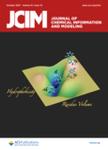版权所有:内蒙古大学图书馆 技术提供:维普资讯• 智图
内蒙古自治区呼和浩特市赛罕区大学西街235号 邮编: 010021

作者机构:Rhein Friedrich Wilhelms Univ Dept Life Sci Informat & Data Sci LIMES Program Unit Chem Biol & Med Chem B IT D-53115 Bonn Germany Rhein Friedrich Wilhelms Univ Bonn Lamarr Inst Machine Learning & Artificial Intellig D-53115 Bonn Germany
出 版 物:《JOURNAL OF CHEMICAL INFORMATION AND MODELING》 (J. Chem. Inf. Model.)
年 卷 期:2025年第65卷第3期
页 面:1357-1366页
核心收录:
学科分类:1007[医学-药学(可授医学、理学学位)] 07[理学] 0703[理学-化学] 0812[工学-计算机科学与技术(可授工学、理学学位)]
基 金:We thank Martin Vogt and Jannik P. Roth for helpful discussions
摘 要:Explaining the predictions of machine learning models is of critical importance for integrating predictive modeling in drug discovery projects. We have generated a test system for predicting isoform selectivity of phosphoinositide 3-kinase (PI3K) inhibitors and systematically analyzed correct predictions of selective inhibitors using a new methodology termed MolAnchor, which is based on the anchors concept from explainable artificial intelligence. The approach is designed to generate chemically intuitive explanations of compound predictions. For nearly all correctly predicted isoform-selective inhibitors, well-defined structural fragments determining the predictions were identified, and in most cases, an individual substructure was responsible for the prediction outcome. For inhibitors with different isoform selectivities, recurrent substructures determining the predictions were distinct. The comparison of newly identified anchor substructures with independent explanations based on calculated feature importance values supported the superior interpretability of MolAnchor explanations. Two highly recurrent substructures determining correct predictions were found to be directly implicated in isoform selectivity of PI3K inhibitors, thus indicating a causal relationship between decisive substructures and selectivity determinants.